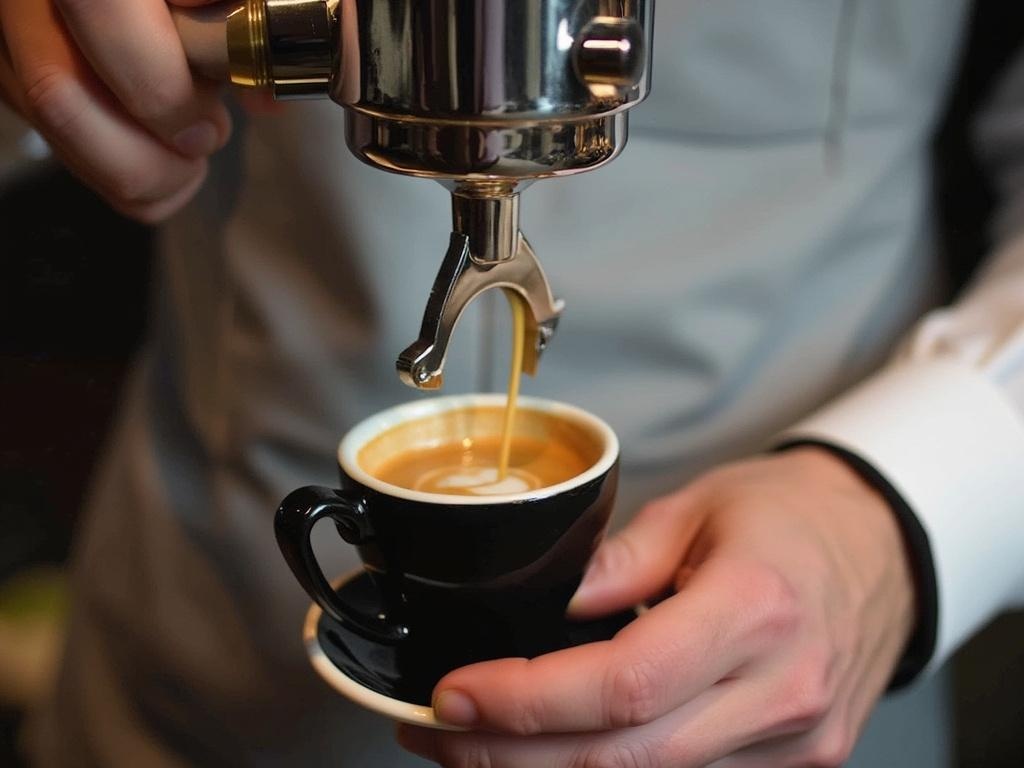Australian baristas have crafted an exceptional tradition of espresso brilliance, consistently reaching World Barista Championship finals with techniques that blend precision with creative intuition. The championship approach to espresso combines scientific extraction principles with artistic presentation, creating balanced shots with distinctive flavour profiles that captivate judges and coffee enthusiasts alike.
Key Takeaways
- Single-origin microlot coffees with unique processing methods are favoured by champions.
- Precise grind particle size of 250-300 microns dramatically reduces channelling risks.
- A consistent brew ratio of 1:2 within 24-26 seconds creates balanced extractions.
- The Weiss Distribution Technique can reduce channelling by 40% in controlled tests.
- Championship-level water chemistry requires 25-40 ppm alkalinity for optimal extraction.
Championship Coffee Selection: Beyond Single Origins
World Barista Champions don't just select coffee—they hunt for exceptional microlot beans with traceable origins and distinctive processing methods. The 2024 WBC finalists predominantly used 100% Arabica beans from small, carefully managed farms. These competitors favour light to medium roasts that highlight the clarity in acidity and sweetness rather than darker roasts that mask origin characteristics.
Modern champions are exploring innovative processing methods beyond traditional washed or natural processes. Many winners have utilised anaerobic fermentation techniques, such as Bali Kintamani beans fermented with Tarrazú mucilage addition, or honey processing methods that create complex flavour profiles. Dose standardisation is equally critical, with most champions settling on 18-21g for double espressos, with 19.5g emerging as the sweet spot among recent WBC finalists.

The Championship Grind: Precision Down to the Micron
Championship-level espresso requires an incredibly precise particle size distribution. World Barista Champions target a narrow band of 250-300 microns, comparable to fine table salt consistency. This precision isn't just coffee snobbery—it directly impacts extraction quality, as ±50-micron variance can increase channelling risk by 27% according to controlled tests.
Five out of seven 2024 WBC finalists used the Barista Hustle Autocomb for consistent grinding. For home enthusiasts seeking championship-level precision, the 1zPresso J-Max grinder with settings between 90 and 150 clicks can achieve similar results. Professional baristas often employ a two-step grinding process:
- Initial grind at a slightly coarser setting
- Fine-tuning with micro-adjustments based on flow rate
- Checking for clumping patterns that indicate grind consistency
- Confirming texture visually against reference samples
World Championship Extraction Variables: The Science Behind Perfect Shots
Championship espresso balances multiple critical extraction variables simultaneously. Water temperature ranges from 90.5-96°C per WBC regulations, with most champions settling around 93-94°C for optimal extraction. Pressure remains consistently between 8.5-9.5 bars, with 9 bars serving as the competition standard that balances extraction speed and flavour development.
The classic 1:2 brew ratio (20g in → 40g out) completed in 24-26 seconds remains dominant among champions, though 2024 WBC finalist Boram Um pushed boundaries with a 2.5:1 ratio specifically for Gesha varietals. This technical approach aligns with SCA standards that mandate 18-22% extraction yields for properly balanced espressos.
For home baristas seeking championship results, these parameters require calibration:
- Water temperature stability within ±1°C throughout extraction
- Consistent 9-bar pressure from pre-infusion through full extraction
- Precise brew ratio measurement using 0.1g accuracy scales
- Timing extraction with stopwatch precision from the first drip
- Measuring extraction yields with a refractometer when possible
Championship Distribution and Tamping: The 30-Pound Standard
Even with perfect beans and grind, uneven distribution causes extraction failures. The Weiss Distribution Technique (WDT) has become essential in championship routines, reducing channelling by 40% in controlled tests according to Perfect Daily Grind. Champions use dedicated WDT tools with 0.4mm needles to ensure even grounds distribution throughout the basket.
Tamping pressure standardisation at 30 pounds (13.6 kg) provides the baseline for champion baristas, though they adjust ±5 pounds based on grind size and coffee characteristics. 2022 WBC champion Anthony Douglas achieved remarkable consistency with less than 0.3g dose variance by using a calibrated spring-loaded tamping tool. For home baristas, the Normcore V4 calibrated tamper ($59) offers similar consistency without professional training.
World Champion Signature Drinks: Proven Competition Recipes
Signature drinks separate good competitors from champions by showcasing their understanding of flavour chemistry. Former World Barista Champion Mikael Jasin created the "Creamypresso" combining 40g espresso with 10g FiberCreme and 100ml water, balancing sweetness and acidity in perfect proportion. According to Ellenka, this prebiotic fiber creamer enhances mouthfeel without masking coffee flavours.
Anthony Douglas' "Familiar Charm" combined double espresso with honey, passionfruit juice, and hibiscus tea to create a harmonious balance between sweetness (Brix 12-15°) and acidity (pH 4.2-4.6). Boram Um's Espresso Martini elevated Brazilian pulp natural espresso with brown sugar syrup and complementary spirits.
Championship signature drinks follow these principles:
- Coffee remains the dominant flavour
- Supporting ingredients enhance rather than mask coffee notes
- Temperature affects volatile aromatic compounds significantly
- Brix levels between 12-15° create pleasant sweetness without cloying
- Textural elements add complexity without heaviness
Championship Equipment and Workflow: Replicating Competition Standards
Water chemistry forms the foundation of championship espresso, with WBC competitors using water containing 25-40 ppm alkalinity and 30-90 ppm hardness. Third Wave Water Espresso Profile ($2.99/sachet) offers home baristas a simple way to replicate these standards. Equipment selection also matters, with La Marzocco Strada AV used by 61% of WBC finalists due to its temperature stability and pressure consistency.
Championship workflow requires methodical preparation and timing. Top competitors spend 8-10 minutes preparing 12 competition drinks, with milk steaming precisely to 51°C with 35% microfoam density. Espressos are served within 8 seconds of extraction to capture volatile aromatics at their peak. Acaia Lunar scales ($225) provide the 0.1g precision needed for consistent results.
The flow rate remains critically important, with champions targeting 1.8-2.2 ml/sec for standard 18g doses. This rate balances extraction time with proper solubility, creating the sweet spot where acids, sugars, and oils extract in perfect harmony. Mastering this workflow allows home baristas to replicate championship results consistently.
